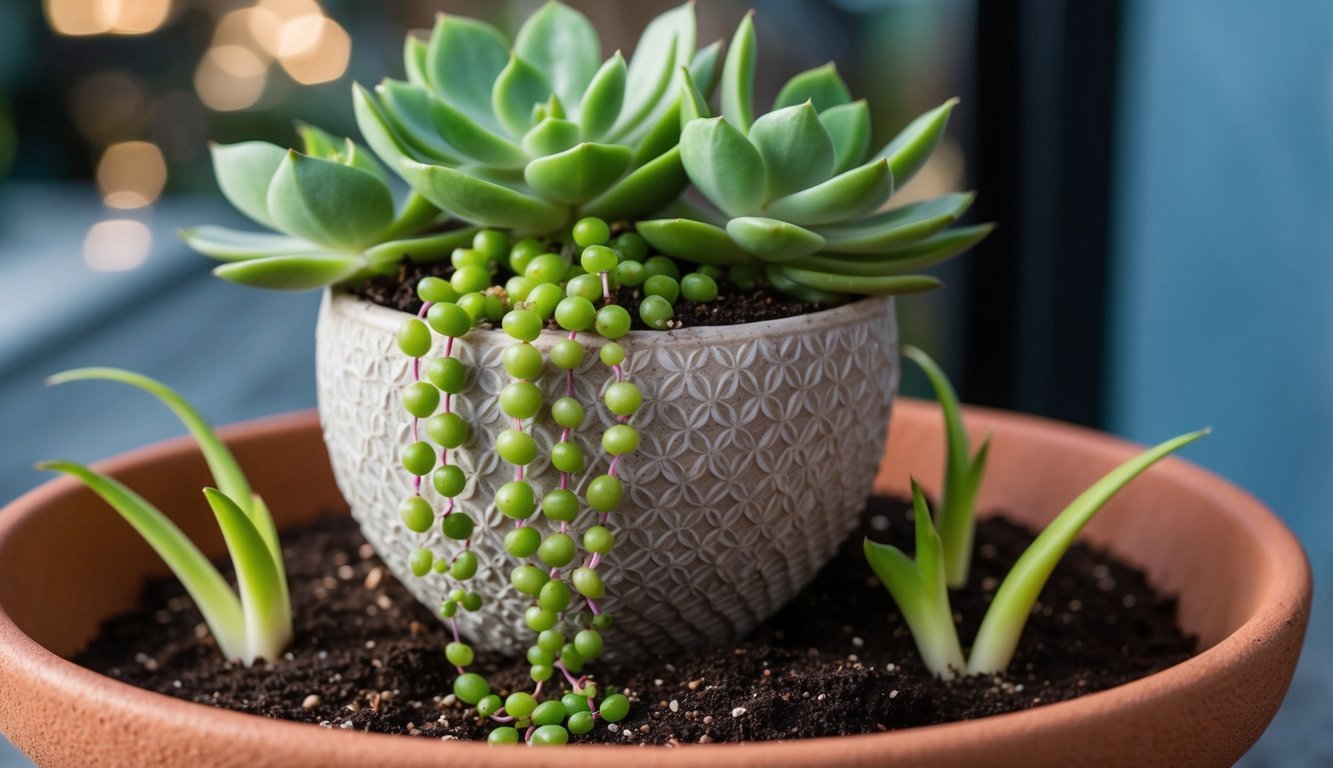
If you’re looking for a unique touch to enhance your indoor plant collection, the String of Pearls succulent could be your perfect match.
This delightful trailing plant is renowned for its whimsical shape and is a favorite among plant lovers for its minimal care requirements.
Let’s walk through the essential pruning techniques to keep your String of Pearls thriving, featuring insights from gardening expert Melissa Strauss.
Originating from South Africa, the String of Pearls flourishes close to the ground, creating beautiful, lush mats.
People typically grow it in hanging baskets, allowing its delicate vines and pearl-like leaves to drape elegantly.
Over time, these evergreen succulents can become elongated and sparse, giving off a rather tangled look.
Their small, spherical leaves are fragile and may fall off easily if not handled with care.
Essential Care for String of Pearls
This succulent loves bright light and requires loose, well-draining soil to flourish.
When it comes to watering, less is more; over-watering can lead to problems.
Under the right conditions, it may even surprise you with the occasional bloom.
Knowing how and when to prune your String of Pearls can significantly contribute to its well-being and aesthetic appeal.
Timing Your Pruning
The success of your pruning largely hinges on timing.
For optimal results, it’s best to prune during the plant’s active growth period.
This timing encourages branching from lower buds, giving the plant a fuller look.
Each cut made just above a bud inspires new stem development.
Moreover, regularly trimming your plant promotes better airflow and sunlight penetration, which are critical for overall health.
Remember, poor circulation can lead to fungal infections that thrive in shaded, congested areas.
By routinely caring for your plant through pruning, you can rejuvenate sparse sections and even enhance its potential for flowering, leading to lovely white blossoms with striking purple stamens.
Choosing the Right Tools
When it comes to pruning, having the right tools is vital.
Opt for sharp and clean instruments—they make a world of difference.
A smaller tool can provide the precision necessary for your delicate succulent’s stems.
Clean cuts facilitate quicker healing and help ward off diseases and pests.
Start by removing any dead or damaged portions of your String of Pearls, regardless of its growth phase.
It’s crucial to clear away unhealthy growth as soon as you spot it.
If the upper part of the plant looks sparse, trimming a few vines can improve light and airflow to the crown.
Focus on stem areas with fewer leaves, often a sign of inadequate light or excess handling.
When you prune, aim to cut just below a node, which is where new growth will sprout.
This method encourages branching and helps to fill in the lower sections of your plant.
As a rule of thumb, trim around three to five inches from each vine unless a more drastic cut is needed.
If you intend to propagate your cuttings, it’s essential to let the cut ends dry out before planting.
Position the cuttings on a paper towel in a cool, dry area, allowing them to callous.
Give them about 24 to 48 hours to air-dry.
This process helps prevent rot before roots begin to form, making your cuttings more resilient against fungal infections.
After you finish pruning, wait a bit before watering.
Since you’ve given the plant a light drink beforehand, it should be fine for a week without additional moisture.
For the best recovery and new growth, relocate your String of Pearls to a warm, sunny spot.
If it has been looking leggy, consider a location with more sunlight—aiming for six to eight hours of bright light each day will do wonders.
To propagate effectively, ensure that your cuttings are fully healed.
Remove the lower leaves from around two inches of each clipping to reveal the nodes where roots will grow.
Let them dry for a day or two.
Prepare a pot with a well-draining soil mix, such as cactus or succulent soil.
Rock a bit of moisture into the mix before inserting the cuttings to help hold them in place.
For added support, dip the ends of the cuttings in rooting hormone before gently placing them into the soil, burying them up to the point where leaves were removed.
Keep them in a warm, bright setting; while they enjoy sunlight, it’s best to ease them into full light conditions until they root, which usually takes around three to four weeks.
By following these pruning and propagation techniques, you can ensure that your String of Pearls remains lush, vibrant, and healthy, bringing joy to your indoor space for years to come.
Source: Epicgardening

